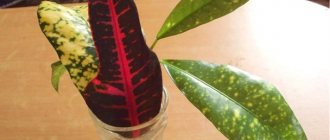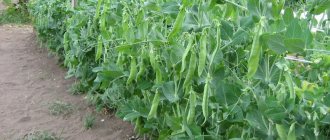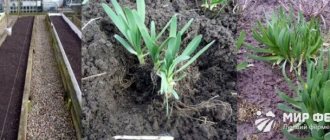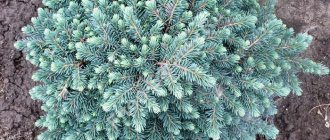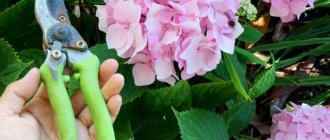Diseases, symptoms, treatment
Although Dracaena marginalata is unpretentious in care, if the rules are not followed, it is affected by pests: scale insects, thrips, spider mites.
Scale insects attack leaves and stems, which begin to turn yellow and slow down their growth. If no action is taken, the plant will die. In case of severe damage by scale insects, the flower is treated with the drug "Actellik", in case of minor damage - with a soap solution with the addition of vodka or alcohol.
Small black insects - thrips - infect the leaves, causing spots to form on them, and the dragon tree slows down its growth. A soap solution applied for 24 hours will help get rid of thrips, after which it is washed off. After a week, the treatment is repeated.
Spider mite infestation occurs due to increased dry air. Affected leaves turn yellow and fall off. Treating the flower with Fufan or Fitoverm will help get rid of the mite. Maintaining the required air humidity is a reliable prevention of spider mites.
Insufficient watering and increased dry air can cause yellowing of leaves, the appearance of brown spots, and their drying out.
Drafts and too low air temperatures also provoke the appearance of brown spots.
Direct exposure to bright sunlight causes burns on the leaves of the dragon tree. To avoid this, the flower is moved to another place or shaded.
How to propagate dracaena at home
Faced with such a situation, novice gardeners sometimes try to get rid of an overgrown pet. But why buy a new plant when you already have a specimen that can easily be restored to its former glory? In addition, this is an excellent source of planting material for propagating dracaena at home!
But how does dracaena reproduce? In closed ground conditions it practically does not bloom; it is also extremely difficult to achieve the appearance of side shoots, and new plants appear from the roots only in exceptional cases.
It turns out there are several ways to obtain offspring from dracaena, and most of them do not require special knowledge or much effort from the gardener. In an apartment, the plant can be propagated using:
- apical cuttings;
- stem cuttings;
- air layering;
- seeds.
The first two methods of propagating dracaena at home are the most preferable. They are lightweight and give almost guaranteed results.
When is it better to propagate dracaena at home, and how to properly prepare planting material? You can check in practice the ease of propagation of dracaena in the spring. At this time, not only growth processes are activated, but also the protective forces of plants. Therefore, even the most labor-intensive method will definitely give quick results. But attempts to root cuttings in winter or autumn most often end in failure.
Reproduction of dracaena by tips and cuttings at home: photo video
Reproduction of dracaena by tips, as we found out, is one of the easiest ways to propagate dracaena in principle. A correctly cut top gives roots quickly enough and then takes root well in the ground. If the stem cutting can eventually rot and not sprout, then the apical cutting almost always takes root.
Conditions necessary for rooting of the top:
- clean cut with a sharp knife
- pure water
- the presence of a growth stimulator in water depending on the type of flower
- diffuse light
- air humidity 65%
A simple and reliable way to root dracaena
Rooting algorithm:
- Cut off the top with a stem 10 cm long.
- Treat the cut of the rooted part with a root-forming compound.
- Place the plant in water for several weeks. changing it periodically.
- Wait for the roots to appear and root into the ground.
- Then, if necessary, transplant into a permanent pot.
Reproduction problems
Despite all the unpretentiousness of an indoor flower, some mistakes can lead to its death. There are a number of typical mistakes that not only beginners, but also experienced flower growers make.
- Excessive watering. Watering this plant should be moderate. The soil should be only slightly moist as the flower is a succulent and is adapted to survive in dry areas.
- Using used containers for rooting and transplanting. This may lead to the spread of infection. When working with this flower, you must use only disposable pots.
- Keeping the flower under the greenhouse for too long. The greenhouse must be periodically ventilated, and then the growing plant must be weaned off it.
Different types of a given indoor flower may differ from each other in the optimal method of propagation for this particular species. Thus, Dracaena Fragrant and Deremskaya can reproduce by all means except growing from seeds, Bent - by stem shoots, Marginata (bordered) - by cuttings and seeds, and Compacta - by stem shoots and cuttings.
Problems that may arise and their solutions:
- Rotting of cuttings rooted in the substrate. This happens if the substrate is too wet. It should be moist, but not soggy. Perhaps the problem lies in the substrate itself: too heavy and dense, not suitable for dracaena.
- Dracaena seeds do not germinate. You should be patient: dracaena, when grown from seeds, does not sprout quickly. Individual seeds can germinate up to six months, although more often this process takes 1–3 months. Soaking with special preparations (Epin, Zircon or any other growth modulators) will help speed up seed germination.
- After trimming the top, the remaining dracaena “stump” does not form side shoots. External factors are to blame. The presence of side shoots and their number even depend on the time of year (for example, if you cut dracaenas in winter, the side buds may not wake up at all, or only one will wake up; in summer, the number of awakened buds can vary from 2 to 5). This process also depends on humidity, so a plastic bag is often placed on the stem to create an optimal air humidity regime.
Each of these methods has its own advantages and disadvantages. For example, to grow a young plant from seeds, there is no need to damage the stems of an adult plant. At the same time, getting dracaena seeds yourself is quite problematic. After all, for this it is necessary for it to bloom, and at home this plant blooms extremely rarely.
How to propagate a plant at home?
It is not difficult even for an inexperienced gardener to propagate dracaena at home on his own. Most species of dracaena do not bloom indoors, so it is rarely grown from seeds. The plant reproduces in the following ways:
- apical cuttings;
- air layering;
- stem cuttings.
The choice of method sometimes depends on the type of dracaena. If Marginata (bordered) can be propagated by both seeds and cuttings, then Fragrant, Compacta and Deremskaya by all means except growing from seeds, Bent - only by stem shoots.
How to plant a flower using a shoot?
The shoot can be taken at any time of the year, but in autumn and winter it will take longer to adapt, the buds slowly wake up and only one bud may appear. It is better to take shoots in spring and summer; with long daylight hours, development is more active and from 2 to 5 shoots appear.
The cut can be straight or oblique, but it should not be crushed or have breaks in the bark; for this reason, it is not recommended to use scissors or pruners.
To cut a dracaena shoot, it is better to use a knife or razor, which should be very sharp.
Cutting instruments must be sterile. To prevent infection, it is better to treat a knife or other cutting tool with alcohol. If there is no alcohol, you can simply put them in boiling water for a few minutes.
The recommended size of the shoot is 15-18 cm. After pruning, it must be dried for 1-2 hours, and excess leaves must be removed so that they do not draw on the forces that it will need to form roots. Some gardeners make small scratches on the stem, from which roots also develop. This is optional.
The base of the shoot can be treated with any preparation that stimulates root growth and placed either in a container with water with the addition of an activated carbon tablet, or in a container with a substrate. If there is no growth stimulator, do not be upset, the plant will also give roots, but 1-2 weeks later.
If germination occurs in water, it must be changed 2 times a week. If germination is in a substrate, it is necessary to monitor its humidity. If the humidity is too high, the plant may begin to rot.
After planting, the cuttings must be covered with a plastic bag or film. It is recommended to sprinkle the plant with water, because it cannot yet feed through the roots.
It is imperative to ventilate the resulting greenhouse, preferably in the morning and evening, gradually increasing the time.
It’s better to start with 10 minutes and work up to an hour. It is advisable to replant into the ground when the roots reach 5 cm in length.
Reproduction by tips
This method is easily tolerated by dracaenas Sandera, Deremskaya, Fragrant and Bordered. Propagation by crowns is convenient when a tall plant is unstable and may break off.
- The upper part of the dracaena is cut off 10-15 cm from the beginning of leaf growth.
- It is recommended to sprinkle the cut area with activated carbon to avoid infection of the plant.
- The lower part of the leaves is removed, the shoot is dried for at least an hour and placed in a container with water, with the addition of coal, or in a substrate.
Leaf
It happens that the plant is still small and it is impossible to obtain cuttings of sufficient length. In this case:
- In the place where the Dracaena leaf is located, an incision is made with a sharp and sterile knife to the middle of the stem. It is important that it does not become overgrown; for this, a match or toothpick is usually inserted into it.
- The incision site is wrapped in damp sphagnum moss and covered with plastic wrap. The moss should not dry out; you can moisten it with a syringe.
- After about a month and a half, roots will appear and grow through the moss. After this, the film is removed, the new young plant is cut and transplanted into a small pot in a permanent place.
By cuttings
This method is most often used when the plant has lost its decorative appearance or dies, but part of the stem is still in good condition.
- First of all, you need to inspect the barrel and select a part without damage.
- The selected piece of the stem is cut into cuttings 10-15 cm long, the cut should pass along the line of attachment of the leaves. Each cutting should have at least 1 bud, preferably 2.
- The finished cuttings are dried and placed in the substrate in two ways:
- vertical;
horizontal.
In the first case, it is placed vertically to a depth of approximately 3 cm. In the second case, the cutting is placed horizontally and pressed slightly. It should not be completely deepened.
When propagated by apexes, only roots form in the dracaena, and when propagated by stems, the buds also wake up and new shoots appear.
How to plant dracaena
Flower transplantation is carried out in spring or summer. When replanting, you need to take care of the soil. The easiest way is to buy a suitable composition for palm trees in the store, but you can make it yourself by preparing the following composition:
- 1/3 universal soil for flowers;
- 1/3 sand;
- 1/3 vermiculite.
This option is the most optimal, as it will not allow the roots to rot.
When planting, it is very important to free the dracaena from the old soil. To do this, you can simply rinse the root system under running water.
The finished container requires drainage, which occupies approximately one-eighth of the pot, as well as holes for excess moisture to escape. After transplantation, it is necessary to fertilize the plant from May to September. Dracaena is transplanted once a year.
Indoor dracaena flower - replanting, watering, fertilizing and care after propagation
Dracaena is quite unpretentious. Does not require constant attention, expressed in constant feeding or frequent transplants. You need to replant the plant once a year if it is young. An adult and old plant is replanted as the roots grow every 2-3 years. Watering is moderate. Dracaenas really do not like damp soil and stagnant moisture in the pan. The soil must be moist. However, some types of dracaenas still love water and can grow in it. For example, Dracaena Sandera.
It should be fertilized with a special fertilizer for dracaenas, or for bamboo. It depends on what type of plant you choose. In any case, the fertilizer must contain the following substances:
- nitrogen
- copper
- potassium
- calcium
- magnesium
- sulfur
- phosphorus
- boron
The list can be supplemented with other useful elements.
4 types of dracaenas: fragrant, marginata, Derema, lemon lime
The best option is the following fertilizer application schedule:
- in the spring-summer period 1 time per month
- in the autumn-winter period 1 time per season
After breeding, care is standard.
How to care for dracaena at home
You may encounter certain difficulties when growing indoor species of this plant, so you need to know how to care for dracaena correctly.
Watering
Dracaena loves moisture; it needs abundant and frequent watering. In the warm season, the flower must be watered at least three times a week.
This is a period of active growth, so drying out the earthen ball will have a detrimental effect on the root system of the plant. Water for irrigation must be settled for 2-3 days or boiled.
From October, watering is reduced in winter; until March, dracaena is watered only once a week. Overmoistening the soil can cause root rot and plant death. Species such as Dracaena Marginata like leaves to be moistened; they need to be sprayed periodically, especially in the summer.
Temperature
Despite the fact that dracaena is a southern plant, it does not like high indoor air temperatures, this is detrimental to it. The plant feels good at temperatures not lower than 5 0 C and not higher than 25 0 C.
In winter, for comfortable maintenance, the optimal temperature is + 15 0 C, and in summer and spring +20 0 C. Dracaena tolerates air temperatures in the range of +10-12 0 C better than heat. Dracaena does not tolerate drafts; in summer it can be taken outside or into a loggia, but it must be placed in protected places.
Lighting
The best option for keeping dracaena is the window sills of the eastern and western parts of the apartment.
Flower varieties with variegated leaves require brighter lighting; if there is insufficient light, they may lose their decorative color and become simply green. In winter, these dracaenas need additional lighting; for this, you can use fluorescent lamps.
Air humidity
Dry indoor air has a bad effect on the appearance of dracaena; the leaves begin to dry at the tips, wither and fall off. Flower pots must be placed no closer than 1.5 m from heating radiators.
Leaves should be sprayed every day in the hot season and as needed in winter. The air can be humidified by spraying water. For these purposes, it is recommended to place the pot with dracaena in a tray with pebbles, which is watered. You can place containers of water in close proximity to the flower.
To spray the leaves, use settled, softened water. If there is an aquarium in the house, the flower can be placed next to it.
Top dressing
Dracaena, like any indoor plant, needs feeding, which begins in the spring. This is a period of active growth and development of the plant. Fertilize the soil regularly, at least three times a month; in the winter months (dormant period), the amount of fertilizing is reduced to once a month.
For fertilizer, ready-made preparations for deciduous evergreen indoor flowers are used. Varieties of dracaena with variegated foliage must be fed with special products for ornamental plants.
In addition to fertilizing the soil, leaf fertilizers are used. They are added to the water for spraying. The foliage becomes bright, rich in color with a shiny surface. The plant is fed in this way immediately after transplantation.
Reproduction of dracaena by seeds at home: photo
It is quite possible to grow dracaena from seeds. But you may encounter some difficulties, for example:
- Dracaena seeds rarely appear in stores; most likely you will have to order them.
- Dracaena seeds germinate unevenly.
- Germination can take up to six months. The sprouts are gaining strength very slowly.
- Not all seeds are likely to germinate.
New sprouts look like this.
Step-by-step cultivation of dracaena seeds:
- Wash the seeds if you did not take them from a store, but from an adult plant. If you have purchased seeds, then immediately proceed to the second stage.
- Pour some water into a flat plate, place the seeds there and cover the top with a cloth made from natural materials. Place the plate in a warm, dark place. You can place it near the battery, just don’t forget to add water.
- Plant the sprouted seeds one at a time in plastic cups with drainage and dracaena substrate to a depth of 1 cm. Sprinkle with soil and spray with water from a spray bottle.
- Cover with film or a transparent lid and leave to germinate in a warm place (not on a radiator). Regularly ventilate the greenhouse and spray with filtered water.
- When the sprouts reach a height of several centimeters, remove the “greenhouse” and leave the plants in a warm, bright place to gain strength.
Dracaena seed sprouting
What care does dracaena require?
Always defend the water for your green pet, and if possible, filter it.
- Water procedures. The plant doesn't like our radiators. Therefore, in winter, when the batteries dry the air, spray the bush twice a day. The water should be at room temperature. By the way, dracaena will not be offended if you spray it in the summer too. You can also wear it in the bath and place it under a warm shower.
- Feeding. Fertilizers for palm trees and other green (ornamental leafy) plants are suitable for you. They can be applied every 2 weeks, from April to September inclusive. Then the plant enters winter hibernation.
- Room temperature. In summer, dracaena should be kept at 18-20 degrees, in winter - at 12-18.
Pruning: what is it for, how to do it
Sometimes the plant will stretch up several meters and you will end up with a brown stick sticking out of the pot with a few leaves growing on top. Ugly!
Trim the shoots from above (they can be rooted), and also shorten the dracaena trunk to a reasonable size. Fresh leaves will soon grow from the trunk. This way you will get two beautiful dracaenas.
But if you are doing pruning for the first time, you are probably worried - how not to have too much? The correct “technology” will be shown in this video:
Propagation of this flowerpot
So, you have in your hands the cuttings obtained after pruning. It is correct to make it a decent size - from 10 to 15 cm. By the way, it can be not only the apical one. The cut stem can also be “chopped” into cuttings and rooted, like this:
- Treat a fresh cut of the cutting with an activated carbon tablet (crushed), and then with the Zircon preparation. Remove excess (lower) leaves. You can also thin out the crown of the cutting, removing either a few or even a third of the leaves.
- Fill a small pot with drainage. Next, place the “adult” soil (it is sold in stores and is called “For dracaenas”; soil “For palm trees” is also suitable). Water well.
- Plant the cutting in a pot, add more soil if necessary.
- Water it and it will sprout roots and become a young bush.
As for the trimmed "old man", pour paraffin on the shortened stem - this will seal it from drying out and rotting. Water the old plant too, and it will delight you with new green shoots.
Transplant: What you need to know
- “Young plants” can be replanted annually, older plants less often (every 2-3 years).
- The best time for this procedure is from March to April. Although there are no contraindications against summer, autumn or winter transplantation either.
- It is better to use the transshipment method.
- The pot should be made of clay. Before planting, it is doused with boiling water; this will disinfect the vessel.
- To prevent the roots from rotting, you can place a large clay shard, preferably in the form of a saucer, at the bottom (under the drainage). Place it “bottom” up, excess liquid will drain under it.
- After transplantation, dracaena may become ill. Place it immediately in the shade, spray the leaves - this will make it easier for it to acclimatize in its new “house”.
What is the plant afraid of?
- Insects. The pests that threaten dracaena are quite common: spider mites, thrips, aphids, scale insects, mealybugs. As soon as you see these uninvited guests, wash the leaves with soap (the mites will go away only if the soap solution is no colder than 50 degrees), and then treat them with a store-bought insecticide.
- The leaves are falling. If they turned pale and wilted before this, the dracaena was frozen. Maybe the roots are rotting - then cut off the top and re-root. Cause of rot: regular overwatering or hypothermia of the soil in the pot.
- The plant is rotting. This is either an infection (this is indicated by wet areas on the leaves or stem, and then the situation is bad - the dracaena may not survive), or poor soil (too heavy), or banal neglect (you overwater the plant, it is cold, it is too dark near the pot). Cut off rotting areas. Sprinkle these places with crushed coal, take better care of the flower - maybe it will go away.
- Dracaena is drying up. Brown, dried-out “islands” scream: we are not sprayed enough, and the air is too dry. Another reason: soil. It has either not been changed for years and has become salty, or you have stuffed it too much with fertilizers.
- The leaves are turning yellow. If only from below, it’s not scary - the leaves have simply outlived their usefulness, and you just have to cut them off. If young leaves turn yellow, you are either overwatering or (most likely) watering your pet too rarely.
This video will tell you more about the diseases of this worthy house plant:
How to plant dracaena
It is necessary to plant dracaena if several young plants grow in one pot. The procedure is best planned for spring, when the plant begins its growing season. A nutritious soil mixture for palm trees or cacti is pre-prepared.
Attention! Before planting flowers, the soil is moistened in the evening
When transplanting, it is important not to damage the fragile roots.
In order to replant the dracaena, it is carefully removed along with the earthen lump from the previous pot. If several young plants grew there, then they are very carefully separated and planted in separate pots, filling them with nutritious substrate. After this, watering is carried out with warm, settled water.
Is it possible to trim the roots of dracaena?
Pruning the roots of dracaena is done only when absolutely necessary. The reason for this may be the formation of root rot or severe growth of roots. The health and appearance of the plant depend on the condition of the root system.
You can trim the roots only with pre-disinfected scissors or garden pruners.
Attention! Do not use a knife to trim the root system, as it may not cut through the fibers the first time.
You should not cut off the roots of dracaena unless absolutely necessary.
The cut areas are treated with crushed charcoal or activated carbon. A healthy root system should be treated with a fungicide to prevent the spread of root rot and preserve the flower.
How to plant a dracaena shoot
This method takes more time and is inferior to cuttings in terms of productivity. However, air layering takes root better. The technology consists of 3 steps.
- First, pinch off the top.
- Place it in water with sorbent.
- Wait for the roots to appear and plant them in permanent soil.
Irrigation is carried out with a syringe. After about 3 months, roots appear. After transplanting into pots, the cuttings and layering are cared for like adult plants. Dracaena develops well with moderate watering, diffused lighting, temperature 20-27°C in summer and 15-18°C in winter. If agrotechnical rules are followed, a beautiful tree with elastic dark green leaves will grow.
There is a belief that dracaena (or false palm) brings happiness and good luck to the house. This plant has always been popular among lovers of indoor floriculture. It is easy to grow at home. And over time, the question invariably arises: how to propagate your pet? So now we’ll talk about propagating dracaena at home.
Varieties of dracaena
The most common type is Dracaena Marginata, the second name is Dracaena marginata. A tall plant with narrow leaves at the top. The leaves are dark green or green in color, with burgundy or yellowish stripes along the edges.
Dracaena Sandera is a shrub. The trunk is not high, the leaves are not very long, they are light green in color with lighter stripes. Does not require additional air humidification and takes root easily in water.
Dracaena fragrant is distinguished by its ability to bloom indoors and has a pleasant aroma. It rarely blooms in an apartment, but can easily be propagated by seeds. The leaves are long, glossy, light green in color, with a wide yellow stripe along the edges.
There are more than 50 varieties of dracaena, but not all are suitable for home breeding.
I never understood ornamental leaf plants. I’m a girl, give me flowers, but brighter and more voluminous ones. But when the child was born, she moved in with her mother for a while. And her entire loggia is filled with dracaenas.
At first I didn’t even notice these worthy plants, but when my mother asked for help with pruning, I became interested. And when I returned home, I begged for a couple of pots to decorate the interior. Now I can’t even imagine my apartment without these striped beauties!
Propagation of dracaena by seeds
At home, it is extremely difficult to cause flowering, much less obtain seeds. If a gardener has such rare planting material at his disposal, there is no need to hesitate.
Dracaena seeds are planted in the soil only fresh, but before that they are thoroughly cleaned of fruit residues and immersed in a growth stimulator solution for 10–15 minutes:
- Dried seeds are sown on the surface of a damp sand-peat, disinfected mixture.
- Sprinkle with a little soil, cover with film or place in a greenhouse for germination. To hatch, the seeds require light and a constant temperature of about 25 °C.
- Until the seeds have sprouted, the greenhouse is regularly ventilated, trying not to allow cold air and condensation to fall under the film.
- Unfriendly shoots should be expected after 25–30 days.
Small dracaenas (photo) are gradually allowed to get used to room air. And then the plants are picked and transferred to separate pots.
This is the most difficult and unusual way to propagate dracaena at home, but it can also bear fruit and add to the gardener’s knowledge about an interesting indoor crop.
Video about propagating dracaena at home
An exotic plant that belongs to the Asparagus family and can grow as a shrub or tall palm tree. The homeland of this flower is the African continent, South Asia and America. Dracaena, which requires some rules to be cared for at home, prefers a humid climate.
Dracaena is also called the “false palm” for its resemblance to palm trees; some species are shrubs. Dracaenas live for many years and grow throughout their entire life cycle. In indoor conditions, these plants almost never bloom. If you follow all the features of caring for dracaena, it will not bring much trouble.
How to update dracaena?
The houseplant can grow very tall. But due to lack of light and volume of the pot, the leaves begin to fade, the shoots become thin and small. In addition, in mature dracaenas the lower part of the trunk becomes bare. In this case, they resort to flower rejuvenation. How to breed dracaena? There are several ways to get offspring from dracaena. In an apartment or office, the plant is propagated:
- Apical cuttings - used for very elongated plants. Shortening the top promotes the development of lateral shoots.
- Stem cuttings - unsuccessfully grown shoots are removed and cuttings are cut from them, this makes the dracaena tidier.
- Air layering is a longer method than the first two. Three cuttings are obtained from one plant, and they take root quickly.
- Seeds are the most difficult way. It is very difficult to obtain seeds at home; dracaena blooms in captivity in exceptional cases. But, if you purchased successful seeds, it is possible to get many young plants at once.
To grow a new flower, everyone chooses the most suitable method on their own.
Propagation of dracaena by apical cuttings
If there is an adult dracaena in the house that has lost its former attractiveness, it’s time to update it and grow a young specimen with its help.
The leafy tip of the shoot, along with part of the stem, is cut off with a sharp knife. It is optimal if the clean cut, perpendicular to the trunk, is at a distance of 15–18 cm from the last leaf. All remaining leaves and old foliage are removed from the stem. After this, the future dracaena seedling is dried at room conditions for 2–3 hours.
You can root a cutting taken for propagation of dracaena at home:
- in plain water with a small addition of root formation stimulant and charcoal;
- in a mixture of crushed coal, sand and peat;
- in vermiculite or perlite at the grower’s choice;
- in steamed soil for dracaena or ornamental palm species.
The cuttings should be rooted in a greenhouse or under a film cover, the humidity inside of which can be regulated by ventilation. To do this, open the shelter twice a day for 15–20 minutes.
To prevent the root buds from rotting or drying out, you need regular but very careful watering and maintaining the temperature within 20–22 °C. The seedlings respond well to spraying. Only it is better to take warm water and be sure to settle it. In the same way, with the help of a spray bottle, plants can receive the first fertilizers in their lives.
A video on how to propagate dracaena at home will help you study the process in detail and get answers to your questions.
The stem with the root system remaining after cutting should not be thrown away! If you cover the top cut with a bag, and put the plant in the pot in a warm place and water it moderately, then after about a month, awakened side shoots will become noticeable on the stem. They will give future life to the renewed, already multi-stemmed dracaena.
Reproduction of dracaena by stem cuttings at home: photo
This method has been described more than once in the article, but let’s focus on it one last time.
- We cut a cutting about 10 cm long. Most often, cuttings can be taken after trimming the dracaena, or after removing the tops.
- The upper cut is treated with wax. The lower one is a growth hormone for the roots.
- Place in a container with water. If this is Dracaena Sander, then with water and sand.
- We wait for good roots to appear (about a month) and root them into the ground.
- After a few weeks, when the roots are stronger, you can transplant them into a permanent pot.
On the left side is the tip, on the right are the cuttings
Reproduction methods
How to propagate dracaena at home interests all fans of this plant. Indoor exotics reproduce most effectively:
- apical cuttings;
- stem segments;
- air layering;
The best period for breeding is the first two spring months. Reproduction in the summer-autumn period is fraught with a longer rooting process.
To propagate a dragon tree using the first method, you need to cut off its upper part, treat it with a root formation stimulator, stick it into nutrient-rich soil, and cover it with film. Twice a day, open the film slightly for 20 minutes for ventilation to avoid increasing humidity and rotting of the cuttings. During the period of root formation, the cuttings are not watered, but sprayed 3-5 times a day with warm, settled water. To speed up the formation of the root system, the cuttings are sprayed weekly with a weak solution of fertilizers.
In the second method of propagation, the stem is cut into segments with 2 buds, up to 7 cm long. Rooting is carried out by cutting the bark of the segments, sticking them into the soil, and covering them with film. Just like with the first method of propagation, regular ventilation and spraying are carried out.
The third method is quite labor-intensive and requires experience. After making a small cut on the trunk of the plant, strip it of bark. Place some wet peat in a plastic bag and tie it to the trunk so that the cut is inside the bag of peat. After some time, roots will grow at the site of the cut. When they appear, cut off the trunk below the roots and plant a new plant in the ground. After a certain period of time, new shoots will appear on the cut trunk.
The most difficult process of breeding dracaena is propagation by sowing seeds. The seeds are sown in a nutrient substrate and covered with film. The first shoots appear after 30-40 days. The complexity of the process lies in the fact that this tropical exotic blooms extremely rarely in indoor conditions, and it is very difficult to obtain seeds.
Reproduction by apical cuttings: algorithm of actions
How to plant dracaena at home using cuttings? This method of breeding is often called crown propagation. The plant must be developed and have a leafy crown. The process is quite simple and convenient. To do this, you should adhere to the following algorithm:
- Cut off the top with a sharp knife, previously heated over fire or wiped with alcohol.
- Treat the cuttings with Kornevin.
- Place in water for rooting or in damp sand.
- How to propagate dracaena from an old plant? To get new tops on the mother plant, leave a stump of about 6 cm. Sprinkle the cut with activated carbon and cover with a bottle. Ventilate and water occasionally; over time, a new plant with several tops will appear.
The cutting for rooting must be without damage to the bark and free from stains and cracks.
Rooting of the top will go faster if:
- Change the water every two to three days to prevent rotting.
- Dissolve an activated carbon tablet in water for disinfection.
- When rooting in sand, the soil needs to be slightly moistened.
- Keep the container with the plant in a bright place, without direct sunlight.
- Make a greenhouse for the plant from transparent material and ventilate it daily.
- It is advisable to spray the leaves with a palm fertilizer solution.
Following the recommendations, an adult plant grows from the top very quickly.
Types of home dracaena and their brief description
Knowing how to care for a dracaena palm tree, you should not forget that there are different varieties of indoor plants that differ in appearance and other features.
Dracaena marginata
If you decide to grow Dracaena Marginata, care at home is quite simple, because the plant is unpretentious. However, this variety requires spraying the leaf blades with settled water. The palm tree has narrow leaf blades with a reddish tint. The long leaves are collected in a rosette and are located on the upper part of the trunk. Externally, the flower looks like a palm tree.
There is another variety of this variety. It has the same leaves in shape, only their color is green. It's called Magenta. Caring for Dracaena Magenta is just as simple. Both species require infrequent watering and tolerate a lack of light. The maximum height of the palm tree is 3 meters.
Dracaena Verneski
This evergreen bush belongs to the Fragrant class. It grows to a maximum of 120 cm, has hard, elongated, sword-shaped leaf plates. Dark green leaves are decorated with white longitudinal stripes.
Dracaena Sandera
This bamboo-like variety is distinguished by a spirally twisted trunk. The maximum height of the tree is 80 cm. The shoots are light green, and the leaves are thin and elongated. There are varieties with variegated leaf blades. During flowering, spikelets are formed that change color from light green to pale golden. The palm tree dies immediately after the flowering period.
Dracaena Bent
This is a variety with an erect, twisting stem, although the name suggests something else. Dark green leaves with a glossy surface are characterized by increased rigidity. They are quite narrow and arranged in a spiral on the stem. There are also variegated varieties of this plant, the leaves of which are decorated with light stripes.
Dracaena Surculosa
This slow-growing variety boasts a flat or erect stem that reaches a length of 60 cm. The variegated varieties are especially beautiful. Their leaves are decorated with spots and stripes of contrasting colors. During flowering, inflorescences with white fragrant flowers are formed.
Dracaena Canary
This variety is also called Dragon Tree. This variety is represented by a bush with a thick trunk and a lush crown. The leaf plates reach 600 mm in length. The maximum height of the palm tree is 120 cm. The hard leaves have a blue waxy coating. The flowers are white, with a pleasant aroma.
Dracaena Fragrant
The plant has a thick trunk and wide leaves and comes with one or more stems. The surface of the green leaf blades is glossy. A yellow border runs along the contour of the leaf. During the flowering period, the white paniculate inflorescences smell pleasant, but at home the palm tree practically does not bloom. The maximum height is 2 m. The fragrant variety improves the composition of the air in the room and cleans it.
Dracaena Derema
This variety has several trunks that are decorated with glossy green lance-shaped leaf plates. The length of one leaf reaches 150 cm. During flowering, paniculate inflorescences appear on peduncles up to 50 cm long. The diameter of one white flower reaches 25 mm. An adult bush has a stem with a cross-section of up to 30 cm.
Dracaena Godsefa
An evergreen shrub with large leaves and a straight stem. The length of the elliptical sheet reaches 600 mm. The dark green surface of the leaf blades has white spots and pointed tips. White fragrant inflorescences grow up to 80 mm.
Dracaena Massangeana
This is a variety with a powerful trunk, the top of which is decorated with a leaf rosette. The oblong leaves have a light stripe in the central part. The maximum height of the bush is 150 cm, and its diameter is 400 mm. This species tolerates partial shade well.
Dracaena Hooker
A tree-like plant up to 180 cm high is decorated with large sword-shaped leaf plates with a glossy coating. The leaves are distinguished by a white border and thin veins. During the flowering period, inconspicuous inflorescences of greenish-white color are formed.
Dracaena studneri
Under natural conditions, the palm tree grows up to 15 m in height. It can have 1-3 trunks. The young tree is decorated with thin greenish stems, which become woodier as they grow older. At the top there is a rosette of green leaves with a glossy surface.
Rooting by air layering
First you need to make a cut on the stem of an adult plant at any height. Then you need to put some object into this incision so that the incision does not heal because of it. You can use a small piece of plastic for this. Then you need to wrap the cut in cellophane film, tie it with a rope or wire just below the cut, and pour soil into the resulting container. The substrate must adhere tightly to the plant. You need to moisten the substrate with water from a syringe. After some time, the dracaena will sprout roots at the site of the cut. When they appear, you need to cut the plant and plant it with roots in a pot.
So, you can root dracaena quite easily and simply at home. This can be done by cuttings, seeds or air layering, each of which is effective and uncomplicated.
Reproduction of dracaena is not an easy process, although even an inexperienced novice gardener can cope with it if certain rules and requirements are followed. This plant is quite delicate and requires careful handling, so the first question that usually arises when propagation is necessary is what to do, root directly in the ground or is it better to send the cuttings into water ?
How to care for dracaena at home
The most popular species include Dracaena marginata, whose care is simple and pleasant. She, like most exotics, prefers good lighting, but does not tolerate direct exposure to the sun and drafts. The ideal place for dracaena bordered is an eastern or western window. Tolerates artificial light, partial shade, temperature 20-25° C in summer, 15° C in winter. The dragon tree will have an even trunk if it is periodically turned in different directions towards the light source. For planting, use a soil mixture of equal portions of humus, turf soil, and sand. All types of this plant love abundant watering, but cannot tolerate stagnant water. In hot summers, dracaena fringe requires watering every 2 days. In winter, the amount of watering is reduced, since stagnant water combined with low temperatures lead to the death of the plant. Dracaena fringe does not tolerate dry air, requiring regular spraying, washing in the shower, and wiping off dust. In summer, spraying is carried out daily, in winter every 3-4 days.
From time to time, it is recommended to loosen the soil in which the dragon tree grows, and if a white coating forms on the surface of the soil, it is replaced. The optimal time for fertilizing is spring-summer, the frequency of fertilizing is twice a month. Dracaena bordered is responsive to fertilizing with any complex fertilizers rich in nitrogen and phosphorus.
Care process
Dracaena is quite light-loving. With careful care at home, dracaena can live up to 15 years. It is recommended to place the container with dracaena on the western or eastern side. It is possible on the south side, but with the dispersion of direct rays of the sun. The plant needs abundant watering, before which the soil in the pot should first be slightly loosened. Use soft water, or even better, rain water. If the water is only tap water, it is better to boil it.
In summer, watering dracaena is carried out every other day. If the leaves begin to turn yellow, you need to water more often. In winter, the plant is watered 2 times a week. If there is a battery nearby, then the watering option is the same as in summer. But moderation should be observed: the flower does not like excess water. The root system may rot.
How to root dracaena with stem cuttings
Dracaena has a rather long stem, which can be used to propagate this flower. You need to take a sharp knife and cut the stem along the leaf scars so that you get cuttings, the length of which is from 5 to 15 centimeters. Stem cuttings can be rooted either in the ground or in an inert substrate. The cutting can be positioned either horizontally or vertically. The temperature should be between 20 and 24 degrees.
If the stem is placed vertically in the ground, then it needs to be buried approximately 2-3 centimeters into the wet soil. When the rooting process is carried out in the ground, sand must be poured onto the bottom of the container; its layer should be approximately 5 centimeters. Thanks to the addition of sand, there will be no need to replant the dracaena, and the young roots will not be damaged.
You can place the cutting horizontally on the ground, after which it needs to be pressed into a pre-moistened substrate, and the edges of the cutting do not need to be covered. When the cutting takes root, it will collapse and new plants will feed from the roots. After this, the transplant can be performed. It will take about 2 months to root a flower using stem cuttings.
Air branches
Palm varieties that are difficult to propagate using cuttings can be grown using an alternative method. Trimming the palm under the leaf to the middle of the trunk will help to obtain a new crop.
For proper germination, cover the affected area with a piece of plastic, wrap it in damp moss and cover the top with a plastic bag. Periodic moistening promotes root development in the cuttings.
The separated part of the dracaena should be planted in a pot with a moistened substrate. You will need to cover the top with a cut can. When the seedling gets stronger, you can remove the greenhouse protection.
Step-by-step instructions for propagating dracaena by air layering:
- On the stem of the plant under the former leaf (at a distance of about 10 cm), mark the place where future roots will form and make a small incision (1.5 cm in length).
- To prevent it from becoming overgrown, a match, a toothpick or a piece of plastic is inserted into the gap.
- Around the cut, the trunk is wrapped in sphagnum and covered with plastic film.
- To prevent the moss under the film from drying out, it is moistened with a spray bottle.
- When the roots grow through the sphagnum, the film is removed and the newly formed seedling is cut from the mother plant and planted in a separate pot.
Reproduction by air layering
This method is ideal for obtaining young plants if the dracaena has grown very tall. It is recommended for use by experienced flower growers. Let's look at how to plant dracaena at home step by step, using layering:
- Prepare nylon thread, sphagnum moss and a plastic bag in advance.
- Determined by the height of the seedling.
- The required distance is measured from the top, the plant is cleared of leaves and a small cut is made under the leaf scar, with a depth to the middle of the trunk.
- A wooden or plastic object is inserted into the incision: a match, a toothpick or a small plate so that it does not become overgrown.
- Wet moss is wrapped around the trunk, covered with a bag and tied.
- Make sure the moss is always damp.
- When the roots have grown strongly, the bag is removed, the shoot is separated from the mother tree and transplanted into a small pot.
- Make a small greenhouse by covering the flower with a glass container. After a few days it can be removed.
Air layering with roots takes root very quickly.
Where did she come to us like this?
These trees or shrubs are related to garden asparagus.
“In the wild” they grow in Africa, less often in the tropics of Central America and South Asia.
The name translates as “dragoness,” that is, “female dragon.” Although in everyday life dracaena is called more simply: “false palm”.
What is special about this species?
Young bushes resemble hedgehogs, studded with sharp leaves. When the dracaena grows, the bush moves up and becomes a crown, and the stem of the plant becomes bare and begins to resemble a pillar. Although there are species whose leaves continue to grow along the stem in a spiral.
Dracaenas are perennials. They grow slowly but surely. And if you buy a small flowerpot, over the years it will outgrow first the cat, then the children, and then you.
In apartment conditions they rarely bloom. The flowers are small, but very fragrant. They look something like this:
You can grow dracaena to decorate a small apartment or a large house. It would also be appropriate in the lobby of a large office or even a hotel.
A brief overview of the most popular types of dracaena
Biologists say that there are several hundred species of this plant. But of course, the majority “frolic in the wild.”
Godsepha. A beautiful, low bush, not at all like a dracaena. Round, wide leaves are decorated with white spots. The species is considered the most picky.
Sandera (bamboo of happiness). The most popular species, subshrub. Cuttings root easily in a glass of water. The leaves are striped, light green-gray. The bushes are relatively low (up to 80 cm) and do not require special care. The trunk of Dracaena Sander really resembles bamboo, so it is often used in various floriculture experiments with the shape and direction of this stem (pictured).
Fragrant. The striped leaves are yellow-green in color and have thin white stripes. They grow up to 1 meter. The plant blooms with small fluffy balls (though only outdoors or in greenhouses - not in an apartment). When flowering it has a strong smell (reminiscent of the aroma of a lily).
Compact. A variation of the previous type. The varnished leaves are relatively short, collected in bunches, completely green. Such dracaenas grow quite tall.
Reflex (bent). Its leaves actually bend down a little. Each has noticeable light stripes running along the entire length of the leaf.
Deremskaya. And these leaves are “painted” with white, green, and slightly light green stripes. Very elegant look!
Draconic (draco). A greenhouse-sized tree decorated with bunches of sharp leaves. The sap of the plant is clear, but over time it turns red and thickens (some people call it “dragon’s blood”).
Bordered (marginata). Another resident of greenhouses, growing up to 3 meters. Although this plant also does well in an apartment.
How to prune dracaena correctly
Caring for dracaena includes its pruning. At home, this is done in order to give an elongated plant an aesthetic appearance or to propagate it. There are two methods for pruning:
A transverse cut is made on the trunk below the top, wrapped with moss and polyethylene, and when air layering appears at the cut site, the top is cut off and rooted.
The cut area must be treated with crushed coal. After a month, side shoots will appear on the trunk, which will give the flower a new shape.
This method involves pruning the apical part of the dracaena in order to reduce growth and change the shape of the plant. The cuttings are also treated to protect them from bacteria, and the cut tops are rooted in other pots. In a month, with regular watering, the plant will produce new shoots. Many sections are treated with molten paraffin.
Reproduction of dracaena by air layering at home: photo
One of the most reliable methods of propagation is propagation using special air layering. Plants rooted in this way take root in almost 100% of cases. However, this method is recommended only for experienced gardeners.
Reproduction by layering (air) in stages:
- First you need to soak the sphagnum moss (moss, sold in flower shops) for a couple of hours.
- Select the location for the cut. Under the leaf node, make a cut with a sharp knife and insert a stick or match into it vertically so that the place does not become overgrown. The incision should be no more than 4 cm long. The depth is about 0.5 cm.
- The incision should be blotted with a cotton pad treated with growth hormone.
- Now take the moss and wrap it around the trunk where the cut was made.
- And the moss, in turn, is wrapped in a bag or film.
- Block off access to fresh air, create a greenhouse by wrapping thread around the trunk above and below the moss.
- Check the moss periodically to ensure it is moist. Don't forget to spray it.
- After a couple of months, cut off the shoot that forms next to the cut and root it.
- Treat the cut on an adult plant with wax.
how to do air layering
This is what air layering looks like in real life



